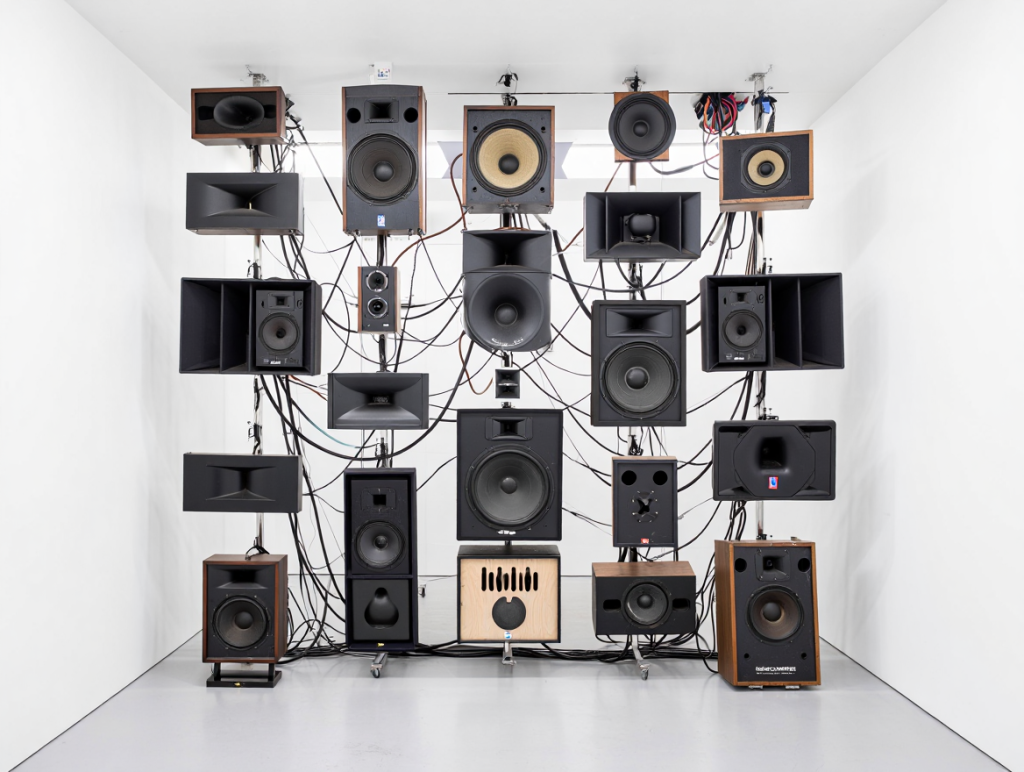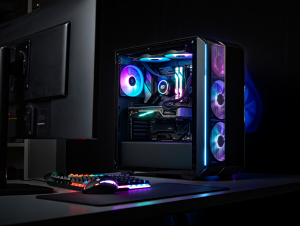
In the world of premium sound, not all speakers are created equal. From entry-level car audio to multi-thousand-dollar home theater systems, the materials used in crafting drivers, tweeters, and enclosures play a critical role in shaping the listening experience. Combine this with the unique engineering philosophies of global audio manufacturers, and the result is a rich and competitive landscape where design, price, and performance all collide.
This article unpacks how different materials impact audio signals and explores the top manufacturers across various price tiers. It includes a comprehensive comparison chart that spans use-case scenarios from automotive to audiophile-grade home setups.
How Materials Shape Sound: The Science of Sonic Fidelity
Audio reproduction hinges on how well a speaker can convert an electrical signal into a mechanical sound wave. The design and materials of key components — especially driver cones, tweeters, and enclosures — have dramatic effects on frequency response, distortion, and tonal coloration.
1. Cone Materials
- Paper (Pulp): Lightweight and fast, paper is still used in budget to mid-tier speakers. It offers natural resonance but can distort under high output.
- Kevlar: Strong and rigid, Kevlar reduces cone breakup at high volumes, offering controlled bass and mids. Used notably by Bowers & Wilkins.
- Aluminum/Magnesium: Rigid and responsive, these metals enhance detail but can sound harsh if not properly damped.
- Carbon Fiber: Lightweight and ultra-stiff, carbon fiber cones offer fast transient response and are found in high-end and automotive setups.
- Ceramic/Glass Fiber: Durable with unique damping properties, offering refined treble without brittleness.
2. Tweeter Materials
- Silk Dome: Smooth and warm sound. Common in home Hi-Fi systems.
- Metal Dome (Aluminum, Titanium): Crisp and detailed but can produce brightness.
- Beryllium: Rare, expensive, and extremely rigid. Prized for its neutral and accurate high-frequency reproduction.
- Diamond: Used in extreme high-end systems like those from Focal. Ultra-light and rigid for unmatched detail.
3. Enclosure and Crossover Materials
- MDF (Medium-Density Fiberboard) remains the industry standard for speaker cabinets due to its density and neutrality.
- Internal wiring and capacitors in the crossover also affect tone clarity and separation, especially in premium systems.
Who Makes the Best Sound Systems Today?
From legendary Hi-Fi brands to tech-forward newcomers, manufacturers have refined their own sonic signatures through decades of R&D. Below is a breakdown of industry leaders across different price points and applications.
Top Audio Manufacturers & Systems by Tier and Use Case
| Price Tier | Use Case | Manufacturer | Speaker Count | Known Materials | Sound Quality Traits | Price Range (USD) |
|---|---|---|---|---|---|---|
| Entry-Level | Desktop/Bookshelf | Edifier | 2.0 to 2.1 | MDF, silk tweeters | Warm mids, limited bass | $70–$200 |
| Entry-Level | Automotive OEM | Pioneer / Sony | 4–6 speakers | Paper cones, plastic domes | Balanced, budget-friendly | $150–$400 |
| Mid-Tier | Automotive Premium | Bose / Harman Kardon | 6–12 speakers | Neodymium drivers, fiber | Rich bass, vocal clarity | $800–$2,000 |
| Mid-Tier | Home Theater | Klipsch | 5.1+ | Horn tweeters, aluminum | High sensitivity, loud | $500–$2,500 |
| High-End | Home Hi-Fi | Bowers & Wilkins | 2.0 to 7.1 | Kevlar, diamond tweeters | Natural tone, deep soundstage | $2,000–$15,000+ |
| High-End | Automotive Luxury | Bang & Olufsen | 10–20 speakers | Aluminum, silk, DSP | Spatial clarity, rich detail | $5,000–$12,000 (OEM) |
| Ultra-High-End | Reference/Studio | Focal / Wilson Audio | 2.0 | Beryllium, carbon fiber | Uncolored, precision detail | $20,000–$200,000 |
| Custom/Extreme | Home Cinema / Pro | McIntosh / KEF | 7.2 to 9.4.6 | Hybrid material tech | Surround immersion, clarity | $10,000–$150,000+ |
Deep Dive: Manufacturer Signatures & Technologies
1. Bowers & Wilkins (UK)
Renowned for their use of Kevlar cones and diamond tweeters, B&W is a go-to for those seeking musical realism. Their 800 Series Diamond line is a benchmark in Hi-Fi, and their partnership with BMW brings high-fidelity sound to the automotive space.
2. Bang & Olufsen (Denmark)
Blending art and engineering, B&O uses aluminum housings, active DSP (Digital Signal Processing), and motorized tweeter lifts (like in the Audi A8) to create immersive soundscapes that adapt to cabin acoustics.
3. Focal (France)
Focal’s Beryllium inverted dome tweeters offer some of the most precise high frequencies on the market. Their Utopia M series is used in elite home and automotive systems (Bugatti, for example). Their layered cone construction balances speed with warmth.
4. McIntosh Labs (USA)
Famous for tube amplifiers and blue VU meters, McIntosh integrates high-current amps with custom speaker systems using carbon-fiber drivers. Their home theater systems deliver both visual aesthetic and sonic power.
5. Harman International (USA)
Parent company of JBL, Harman Kardon, and Lexicon, Harman dominates OEM partnerships (BMW, Lexus, Mercedes-Benz). Their audio tuning includes QuantumLogic Surround and Clari-Fi, which enhances compressed audio files.
6. KEF (UK)
KEF’s Uni-Q driver arrays place the tweeter inside the midrange cone, creating a single point source that improves sound coherence. Their use of metamaterial absorption technology (MAT) allows for cleaner high-frequency response.
Trends Driving the Future of Audio Systems
- Active vs Passive Systems: Active systems (amplifier built-in) with DSP are on the rise, allowing real-time audio adjustment based on room or vehicle acoustics.
- Material Hybrids: Companies are blending materials like carbon-fiber-Kevlar composites for nuanced acoustic tuning.
- Immersive Audio (Dolby Atmos): More systems are going beyond stereo or 5.1 setups to support height channels and object-based mixing.
- Sustainability: Brands like Sonos and JBL are incorporating recycled plastics and biodegradable packaging without compromising audio fidelity.
Sound by Purpose: Know What You’re Paying For
When evaluating an audio system, price alone isn’t the only indicator of quality. Instead, consider:
- Listening Environment: Are you in a small apartment or a treated listening room?
- Usage Type: Is the system for casual listening, studio mastering, or cinematic immersion?
- System Synergy: Great speakers need quality amplification and source signals. Brands like McIntosh or NAD offer matched amplifiers.
- Personal Preference: Some listeners love the crisp brightness of titanium tweeters; others prefer the warmth of silk domes.
Conclusion: Materials Matter, But So Does Engineering
Whether you’re spending $200 or $200,000, the foundation of great audio lies in the interplay between material science and acoustic engineering. Choosing the right system means aligning your budget, space, and listening habits with the unique strengths of each manufacturer.
In the ever-evolving race for acoustic perfection, one truth holds steady: in audio, materials don’t just make a difference — they define the experience.



